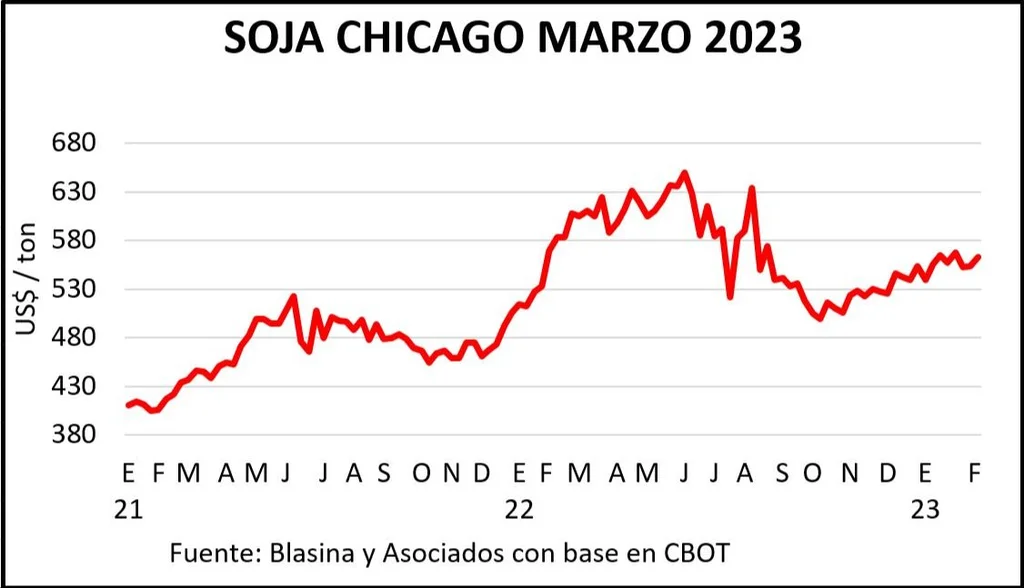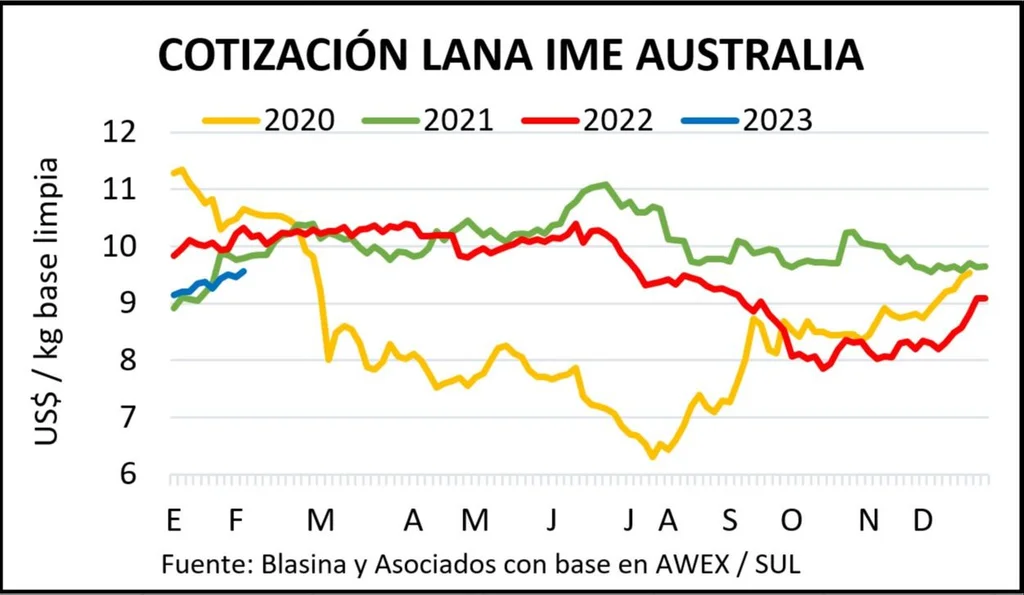In a week in which The drought continued to be news in Uruguayan agriculturea triple rise in export prices, in beef, soybeans and woolencourages this week expectations of a recovery in the value of commodities.
in the last two weeks the price per ton of exported beef rose 15%at the same time that grains closed their second week with a profit and wool chains six weeks up.
The signs of reactivation of the Chinese market after the New Year, after having exceeded the peak of the covid 19 pandemic in December and January, are positive.
The stock markets rose, supported by the possibility that the recession projected for 2023 will not be such and that there will be little growth.
livestock market
The weekly export price reference for beef rose 15% in the last two weeks, from a floor of US$3,868 to US$4,455 per ton.
“The price in China has already started to rise,” said Argentine consultant Ignacio Iriarte, who sees “good to very good” news from the exclusive market for South American beef production.
“China is getting back to normal in an extraordinarily faster and earlier way than previously assumed,” he said.
At the local level, it will be necessary to rebuild the forage to meet the demand of a very busy meat market in 2023, with the projection of an increase in Chinese imports and difficulties in the production of meat in the United States, which reached its lowest stock of cows. breeding since 1962.
In Uruguay, the cattle market is “totally disassociated with the forage reality,” said Gustavo Basso, director of Gustavo Basso Negocios Rurales.
Slaughter improved in the last week (43,723 cattle) to close January around 145,000 head30% less than last year and at a historically low level that is consistent with situations of forage pressure.
The limited supply of fat cattle has given firmness to the market, which remains at values of US$3.40 to US$3.50 for the steer and US$3.10 to US$3.20 for the cow.
The replacement market, also with little supply, shows firmness in certain categories. Plaza Rural opened the 2023 auction cycle with upward arrows in the values obtained by calves and veals, and large animals that are close to slaughter had a downward correction.
Stability is subject to whether the rains in the coming weeks are enough to calm supply and generate a price rebound.
The expected rebound in China is hinted at in prices, but not in shipped volumes. Billing for beef exports fell 39% in January, with US$131 million compared to US$215 million a year ago, according to data published by the Uruguay XXI Institute.
A downward trend in sales to China is consolidated. Dollar shipments plummeted 55%, from $150 million in January 2022 to $67 million last month.
Sheep meat, far from recovering, showed a new drop in value this week that leaves it almost US$900 per ton below beef, when more is usually paid: it was US$3,584 in the last week and US$ 3,615 in the last four weeks. The values in January have been the lowest in the last two and a half years.
Unlike beef, the exported volume grew 41.1%, from 1,181 tons in 2022 to 1,667 tons. in the present year. Billing fell almost 5% due to the sharp drop in price, from US$6.55 million to US$6.24 million.
Markets in agribusiness.
grain market
It was a firm week for soybeans, which closed at US$543 a ton and very firm corn above US$310, in a stable grain market. In Chicago, soybeans closed at US$ 563 a ton, with an adjustment of 1.5% in its second week of positive balance.
In Argentina, the soybean harvest is estimated at 36 million tons, a lowered outlook from 50 million at the beginning of the campaign.
Added to this bullish factor is another: delays in the soybean harvest in Brazil, paradoxically due to excessive rainfall. Another bullish factor was the drop in the dollar in Brazil, which fell below 5 reais this Thursday for the first time since June, although it rebounded on Friday to RS 5.14.
Wheat in the United States goes through the winter under the threat of drought, a bullish factor for the grain, but in time to correct with rains in spring.
Brazil is flooding the markets of China and other destinations with corn, dropping US$3 on the May position at the market open.
Rice in Brazil stabilized after being at US$18 a bag. It fell to US$17.40 and is heading to US$17, an interesting price that is not reached in Uruguay since it is generally listed two or three dollars below Brazil.

Markets in agribusiness.
wool market
Reference prices for wool rose for the sixth consecutive week, with upward corrections in almost all categories. The most benefited were the 20 to 21 micron wools, as well as the 28 micron range.
Sustained demand from China and European markets led the Eastern Markets Indicator (EMI) to strengthen to a new high for the 2022/23 harvest. In the two days of auctions, 92% and 94% of the offer was placed.
The weekly adjustment was 6 cents (0.63%), closing at US$ 9.56 per clean base kilo. The indicator is 7.3% below the first week of February 2022.
Unlike previous sales, where the increases were due to the exchange effect, the values of almost all types and diameters of wool were strengthened, both in dollars and in local currency, indicated the SUL.
Certified and superior quality wools continue to win important prizes, especially in the finest sector.
This trend improves the prospects at the local level, with greater activity in the market: “we are having a response and prices for wools that did not have them, such as thick wools,” said Diego Carabajal, manager of Escritorio Dutra wools.
It is a more active February than in the last two years, greatly affected by the covid 19 pandemic.

Markets in agribusiness.







